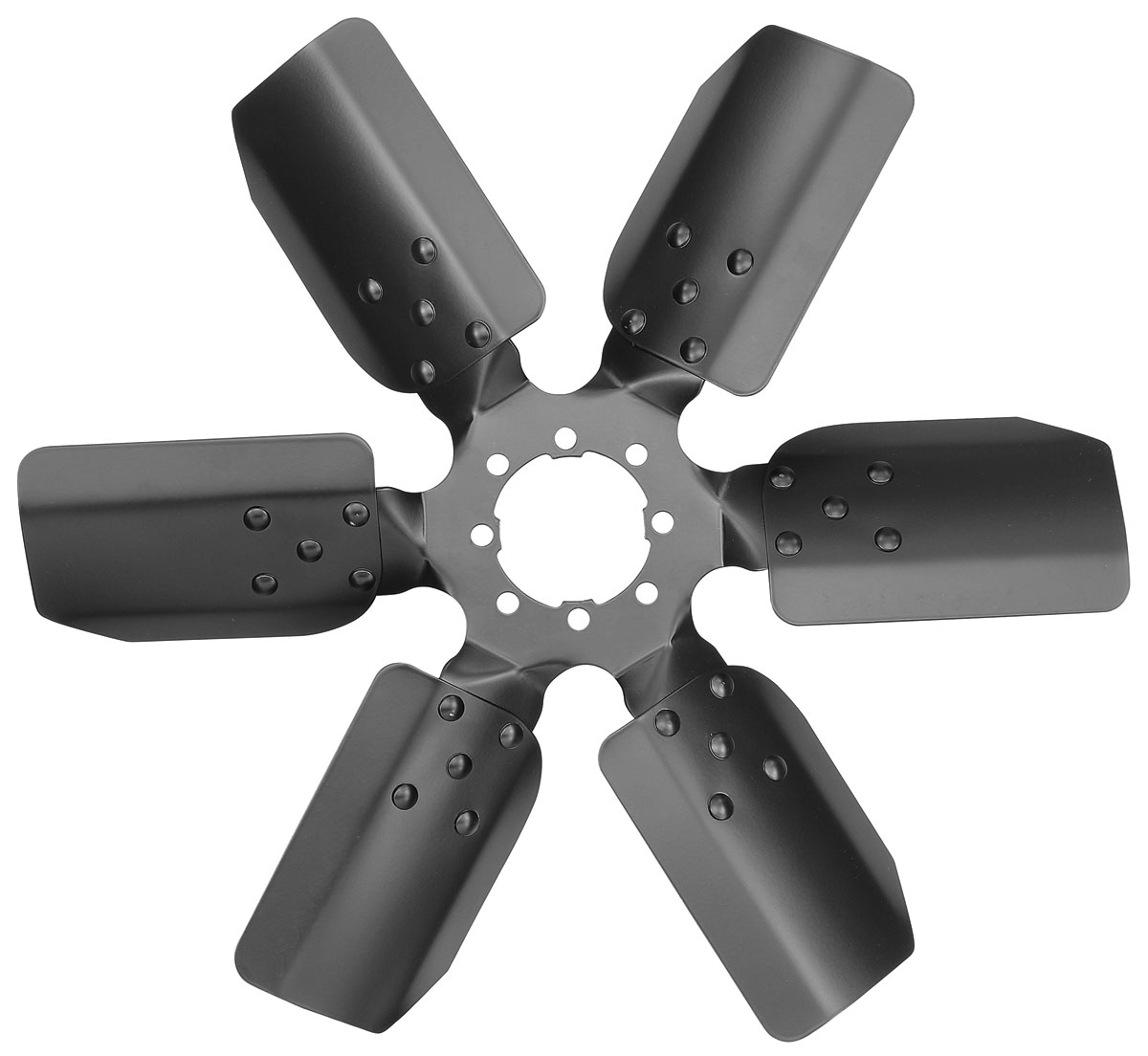Unknown Facts About Fan Blades
Non-thermal clutches run exclusively based on the shaft speed of the water pump. At low and idling speeds, the clutch allows the fan blade to turn at practically a 1:1 ratio. At high speeds, the silicone fluid within in the clutch will lose its capability to move the energy from the shaft to the fan clutch body (and therefore, the fan) and the fan is then enabled to practically free-wheel, removing its load from the engine.
Nevertheless, non-thermal clutches are a lower-cost option than thermal-style clutches. The thermal fan clutch operates in response to underhood temperature levels. As hot air blows across the radiator, it warms a thermal spring installed at the front of the clutch. As the spring is heated, it turns and permits valve ports to open within the clutch.
This engages the clutch and drives the fan. When the engine is cooled off, the thermal spring rotates back and closes the valve ports, disengaging the fan. The speed at which a thermal fan clutch spins a fan depends mainly on the exact fan you pick. On the Summit Racing site, for example, you'll discover 3 various types of thermal fan clutches from Hayden alone: This design turns the fan at 60-70 percent of the water pump shaft speed when engaged, and 20-30 percent when disengaged.
This fan design turns the fan at 70-90 percent of the shaft speed when engaged for increased cooling. When disengaged, it turns the fan at 25-35 percent. It's utilized with deeper-pitch fans (2Â 1/2 of pitch), and works well with greater operating rpm. Serious task thermal fans turn the fan at 80-90 percent of the shaft speed when engaged and 20-30 percent when disengaged.
This design of fan clutch runs like a thermal clutch, but the ECM/PCM signal manages the level of engagement of the EV clutch. This engagement procedure is ultimately controlled through the ECM/PCM by the following input variables: Coolant Temperature, Intake Manifold Temperature, Transmission Oil Temperature, A/C Pressure and Engine Oil Temperature Level.
Like all parts, fan clutches will wear out and need changed. fan blades. According to Hayden, here are some indications your fan clutch might need changed: Fan spins excessively when engine is stopped (3 or more times when hot engine is shut off). Poor A/C performance at idle or low vehicle speeds.
Excitement About Fan Blades

Fan speed does not increase up until engine is exceedingly hot. Fan blade idea moves more than 1/4-inch front to back. Fan turns approximately or does not turn at all. Extreme fan sound at all speeds due to unsuccessful bearing. Vibration that increases with engine speed. Leaking fluid or oily build up around the bearing or thermal spring.
289, 302, W/ FAN CLUTCH BOSS 302, W/ FAN CLUTCH 250, W/ FAN CLUTCH W/ FAN CLUTCH, REPLACEMENT 289, FACTORY A/C AND FAN CLUTCH 289, DELUXE DEALERSHIP A/C 200, FACTORY A/C, POWER FAN, W/O EMISSIONS FAIRLANE, TORINO, 200, A/C, POWER FAN, W/ EMISSIONS: This item can expose you to chemicals including lead and DEHP, which are known to the State of California to trigger cancer and abnormality or other reproductive damage.

Almost unheard of on modern-day cars and trucks with electrical engine cooling fans, individuals sometimes still refer to the accessory drive belts as "fan belts." This term harkens to the day when vehicles and trucks used drive belts to drive the cooling fan or water pump. explanation The engine cooling fan, made from plastic or metal, isn't hard-connected to the fan wheel or water pump, but instead is soft-connected via the fan clutch.
A stopping working fan clutch could leave you stranded with pricey repair bills, so pay attention to these signs. Here, you can see where the fan and fan clutch are driven by the engine (fan blades). Morio/ Wikimedia Commons There are three kinds of fan clutch, depending upon the lorry's style. A little quantity of resistance always keeps the fan spinning, but it's basically free-wheeling till the fan clutch engages.

The Ultimate Guide To Fan Blades
A centrifugal valve opens to allow the flow of heavy silicone fluid, locking the fan blades to the wheel. At idle and low engine speeds, this fan clutch is fully engaged, gradually disengaging as engine speed boosts. Depending upon the application, it might freewheel above 2,500 to 3,000 rpm. An functions similar to thermal and torque-limiting types however isn't modulated straight by temperature level or speed.
If the fan clutch is spoiling or has stopped working, there are a couple of methods you might discover. Focusing on your lorry is the primary step in a precise diagnosis, effective repair work, and trustworthy vehicle. at low speed his response or when stopped is the most-common fan clutch failure sign.
At a stop, however, because the fan clutch does not engage and air isn't required through the radiator, the engine can't dissipate excess use this link heat. in winter is another common problem but caused by the opposite fan clutch failure. If the fan clutch seizes, it stays engaged all the time, cooling off the engine excessive.
This can cause bearing damage, radiator damage if the blades flex too far, or even shatter a plastic fan. after engine shut-down may suggest a weak clutch. Silicone fluid leaking from the fan clutch would cause this problem. When the engine is off, there are a couple of things you can do to check the fan clutch:. fan blades.